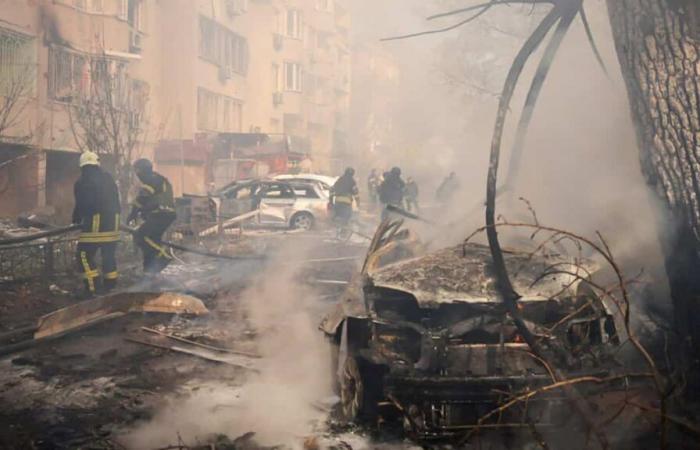Ukraine can now strike Russian territory with long-range American missiles. A victory for kyiv, but which remains late, limited on the tactical level and caused firstly by political calculations in Washington.
• Also read: Biden adds fuel to fire by authorizing missile launches in Russia, Kremlin says
• Also read: US allows Ukraine to use long-range missiles against Russia
Democratic President Joe Biden has granted a long-standing request from President Volodymyr Zelensky. But he did so two months before the return to power of Republican Donald Trump, very critical of aid to Ukraine.
However, the Russian army relentlessly continues its advance in eastern Ukraine, claiming on Monday the capture of a new village south of Pokrovsk, a key logistical node for the Ukrainian forces.
According to an AFP analysis on Monday based on data from the American Institute for the Study of War (ISW), Russian forces took an additional 60 km2 this weekend, or 458 km2 since the beginning of November. The October record (610 km2) will therefore probably be beaten, and probably by a large margin, in line with the acceleration of Russian advances since this summer.
“Putin is not yet at the limits of Donbass. As long as he is not there, he will continue to push,” a senior French military official predicts for AFP. “If we look coldly at the balance of power, the advantage is the Russian side.”
Mick Ryan, a former Australian general, agrees that “the news from eastern Ukraine continues to be grim.” For him, “while no major breakthrough is expected, the Russians have been able to maintain pressure on the Ukrainians for a year now, which is revealing.”
Deep strikes on the Russian side will certainly, in theory, force Moscow to back down. But “these missiles have already been used for at least a year and a half (in Crimea and Donbass, editor’s note). Nothing will change,” minimizes Alexandre Khramtchikhine, a Russian military analyst based in Moscow.
- Listen Benoit Dutrizac talk about the subject in podcast format on the platform OLD also broadcast on 99.5 fm:
A good idea?
“You cannot use them directly from the front line, because the launchers would not last long,” he adds, insisting on their “very limited number”. No reliable estimate is available on this point.
“The Russians have long placed their most critical resources out of range of the ATACMS (missile),” adds Stephen Biddle, professor of international affairs at the American University of Columbia, for AFPTV. “I don’t think this is decisive in the course of the war.”
The ATACMS, with a range of 300 km, carry either a single charge or cluster bombs which disperse multiple small explosives over the territory, analysts from Janes, a private British intelligence company, explain to AFP.
Ukraine should use them against “Russian logistical bases to slow down supplies, or command nodes,” they believe, while also emphasizing that Moscow’s anticipations could make this benefit “less significant than initially expected.”
kyiv, in fact, has been asking for this green light for a long time. And, as with heavy tanks, fighter planes or other major equipment, it only won its case after incessant lobbying.
ATACMS, like each weapon taken separately, do not constitute a panacea. They are fast and very mobile, but the Russian S-400 air defense system “allows them to be countered,” Janes analysts assure.
Administration Trump
Several experts implicitly describe an American decision that is primarily political, with an internal and foreign vocation, while the military situation and the Western exhaustion could force kyiv, from 2025, to negotiate in an unfavorable position.
On the domestic front, Donald Trump will get the keys to the White House in two months and can backtrack. “It is certain that before January 20, the administration wants to send to Ukraine all the aid currently authorized by Congress,” estimates Stephen Biddle. But the decision “in no way constrains the Trump administration.”
And on the external level, these missiles respond to North Korea’s sending of thousands of soldiers to Moscow’s side. “I don’t think the Biden administration wants them to believe that this is free,” continues the military historian.
“I fear that (Washington) is placing more emphasis on sending messages to China and North Korea than on substantially increasing Ukrainian strike capabilities,” notes Ivan Klyszcz of the International Defense Center and Security (ICDS) in Estonia.
Will the United States “allow kyiv to strike targets in Russia unrelated to North Korea? (…) This seems ambiguous to me,” he notes.
“Some argue that this authorization can serve as a bargaining chip” when discussing with Moscow, he adds. But here again, the future is illegible. “Trump remains as unpredictable as ever.”






